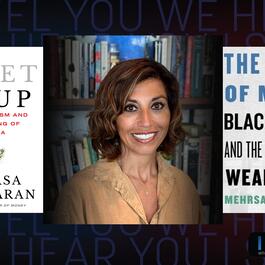
I SEE U
I SEE U is a unique, award-winning program that gives voice to those who have often been unheard, and exploring cultural identity through the stories of people and places that have been transformed by the effects of long-standing biases. We guide fascinating conversations with newsmakers who share their personal histories, their struggles and their triumphs. In listening, we learn to empathize and hopefully experience a few ‘a-ha’ moments for ourselves.
Show episodes
Legendary singer-songwriter Luther Vandross pioneered a golden age of silky-smooth R&B and passionate slow jams. In addition to countless hits and platinum albums, he earned eight Grammy Awards, including ‘Song of the Year’ in 2004 for “Dance With My Father” – a track that was released while he was hospitalized after s
Ballet traces its origins to the 15th century and the Italian Renaissance. But the art form has continued to evolve, with choreographers and dancers creatively incorporating new interpretations reflective of contemporary culture. Despite its evolution, today’s ballet still lacks dancers of color, especially in principa
Despite a highly successful acting career with some of the biggest names in Hollywood, Luis Guzmán never really wanted to be an actor. He was born in Puerto Rico and raised in Loísada, the name given to Manhattan’s Lower East Side by the massive working-class Puerto Rican community that migrated to New York in the 1950
In 1974, CBS premiered Good Times, a TV sitcom that would showcase the first Black mother and Black father on screen – two parents, trying to make ends meet, while raising three children. Set in a public housing project in the south side of Chicago, Good Times elevated stories of struggle – the joy, the pain and the dr
Celebrated author of the award-winning book, The Color of Money: Black Banks and the Racial Wealth Gap, Mehrsa Baradaran states that when the Emancipation Proclamation was signed in 1863, Blacks had 0.5% of the nation’s wealth. This statistic makes sense, since Blacks weren’t allowed to own capital as enslaved people —

115: A Nation with No Name… with “LatinoLand” Author & Acclaimed Journalist Marie Arana
There are 64 million Latinos in the United States – nearly 20% of the population. By 2050, it’s projected that a third of the country’s population will be Latino. But despite being such a significant part of the country, Latinos are still often viewed as being immigrants, not fully American – even though they’ve been a



